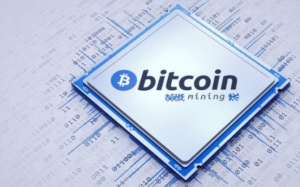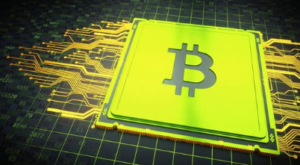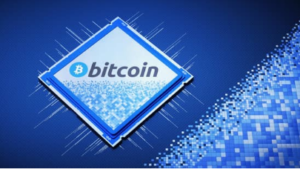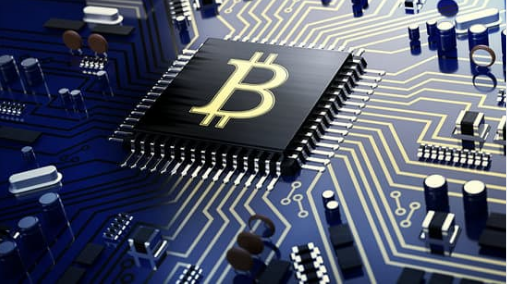Table of Contents
Before you read this article, you need to understand bitcoin and its underlying principles. Bitcoin is a cryptocurrency that has been making headlines for a while. Suppose you’re not familiar with what a bitcoin is. In that case, a bitcoin is a form of a digital currency produced electronically and decentralized, with no oversight or central governing body. Furthermore, a bitcoin is mined by supplying computing power to verify other bitcoin transactions, which needs computing power. In return, bitcoin miners receive bitcoin from transaction fees and the newly created bitcoins.
Satoshi Nakamoto, who is known for Inventing bitcoin and implementing the first blockchain, Created Bitcoin, a decentralized digital currency without regulation, in 2009. It follows the idea of decentralized money. Any entity doesn’t control many kinds of peer-to-peer networks that power cryptocurrencies and them. These networks use robust cryptography to track and verify transactions caused by users.

To produce bitcoin, you need specialized software called a miner. In bitcoin, there can be no double-spending. Obtaining a bitcoin wallet is the first step. A bitcoin wallet, or cryptocurrency wallet, can be thought of like your bank account for managing all of your cryptocurrencies. You can also buy bitcoins at one of the many exchanges available on the internet. Bitcoin is used as a form of investment and a payment method for goods and services without involving third parties.
Bitcoins and other digital currencies like Ethereum and Litecoin are frustrating the traditional banking and financial industries and enabling a digital gold rush. As a result, miners and large companies like Microsoft, Amazon, and IBM invest millions of dollars in the technologies to find and sell profits from digital currencies. But enter the digital currency landscape. You should be aware that your computer could end up mining digital currencies, using up your hard drive space, and consuming more electricity.
What is bitcoin mining?

Bitcoin mining is the process of validating payments on the Bitcoin network. Mining is also the process of adding transaction records to the public ledger known as the blockchain, which involves solving complex mathematical problems with powerful computers to release new coins. Bitcoin and other anonymous digital currencies are built on blockchain technology. A block is the small element of a blockchain and serves as a container for all transaction information. A block has four primary properties or fields:
1. Previous hash
This hash is not an actual HASH value but is a decimal number that gets reset to zero with each new block. It is used in the proof-of-work algorithm. The previous hash attribute stores the hash of the previous block. This value is used to connect the blocks.
2. Data
To understand the transactions in this block, we will need to compute the data density. The data density measures the number of transactions in a block, weighted by the amount of data in them. Data is the total number of transactions in this block, including mined and validated.
3. Nonce
In a “proof of work” consensus mechanism like bitcoin, a nonce is a random number used to change the hash value produced. The nonce is the parameter utilized to generate the hash value that every block is meant to create. The process of transaction verification in the blockchain is known as proof of work.
4. Hash
The hash value generated by running the previous hash value, the contents, and the nonce through the SHA-256 algorithm represents the block’s digital signature. SHA-256 is a fundamental cryptographic hash algorithm. It generates a unique 256-bit alphanumeric hash value for any given input. What’s more, with the help of the SHA-256 algorithm, it is made even more difficult for hackers to alter data, be it data on a computer, on a hard drive, or in the cloud.
It has been made difficult to ensure that no individual can control what is included in the blockchain. Anyone with appropriate hardware and an internet connection may engage in mining. We all know that bitcoin mining is the backbone of cryptocurrency. Mining will create new bitcoins and keep the network secure. Bitcoin mining can be done in different ways –
- Solo mining
- Pool mining
- Cloud mining
Each has pros and cons, but it all depends on your goals for being a bitcoin miner. Solo miners could be profitable in the long run because they’re not paying any fees. Pool miners are often competing with one another for a chance at solving a block, which could lead to higher payouts if they are successful. Cloud miners make up their profits by signing up with multiple cloud companies and earning daily payments from them, but could also lose money if their contracts expire before they earn back what they invested in their contracts.
Bitcoin mining is done on a network of nodes connected to the internet worldwide where they confirm and record the transactions that happen with the bitcoin tokens (BTC). A bitcoin transaction occurs when someone sends bitcoins to someone else. A complicated mathematical formula ensures the transaction is legit, and the blocks confirm the transaction with each other. Without all those steps, the transaction can be rejected by anyone with the power to refuse.
Bitcoin mining has become very popular in recent times because of the volatile nature of bitcoin, and it is a way to make money if you have a powerful computer rig. But it does take time and dedication to learn enough about bitcoin mining.
How does bitcoin mining work?

Bitcoin miners are essentially helping to keep the bitcoin network running. They solve complex mathematical problems called proof of work, which verify transactions and are paid with bitcoins in exchange for their work. The process involves Collecting recent transactions into blocks and attempting to solve a computationally complex puzzle. The first participant in solving the problem puts the next block on the blockchain and collects the prizes. The transaction fees linked with the transactions contained in the block are both the incentives that motivate mining. To solve these problems, miners use special software or hardware tools that do nothing more than guess until they find a solution that matches what everybody else could come up with. The more guesses each miner makes, the higher their chance of solving one of these puzzles. Forex Affiliate Platforms are the best way to make money and you can easily get started with trading by using prawica.net/trading-software/pattern-trade-recenzja-2021-czy-to-jest-legalne-czy-falszywe/
Bitcoin miners support the Bitcoin network by using their computer power to solve complex mathematical problems. Still, the difficulty of these problems varies depending on how much computing power they use. The more people who mine for bitcoin, the more complex the situation becomes. In return for supporting this crucial part of bitcoin infrastructure, miners are rewarded with bitcoins. The amount they earn depends on how much computing power they contribute to solving these mathematical problems.
Author Profile

- Guest Blogger & Outreach Expert - Interested in Writing Blogs, Articles in Business Niche | News Journalist By Profession in the United Kingdom
Latest entries
 BusinessNovember 21, 2025A Practical Guide to Using LMS Platforms for Better Onboarding
BusinessNovember 21, 2025A Practical Guide to Using LMS Platforms for Better Onboarding EducationNovember 17, 2025Choosing the Right AI Course for Your Child: A Parent’s Guide
EducationNovember 17, 2025Choosing the Right AI Course for Your Child: A Parent’s Guide FinanceSeptember 19, 20257 Paid Advertising Mistakes That Drain Your Marketing Budget
FinanceSeptember 19, 20257 Paid Advertising Mistakes That Drain Your Marketing Budget BusinessAugust 22, 2025How Recycled Polythene Helps Businesses Exceed Sustainability Targets?
BusinessAugust 22, 2025How Recycled Polythene Helps Businesses Exceed Sustainability Targets?





